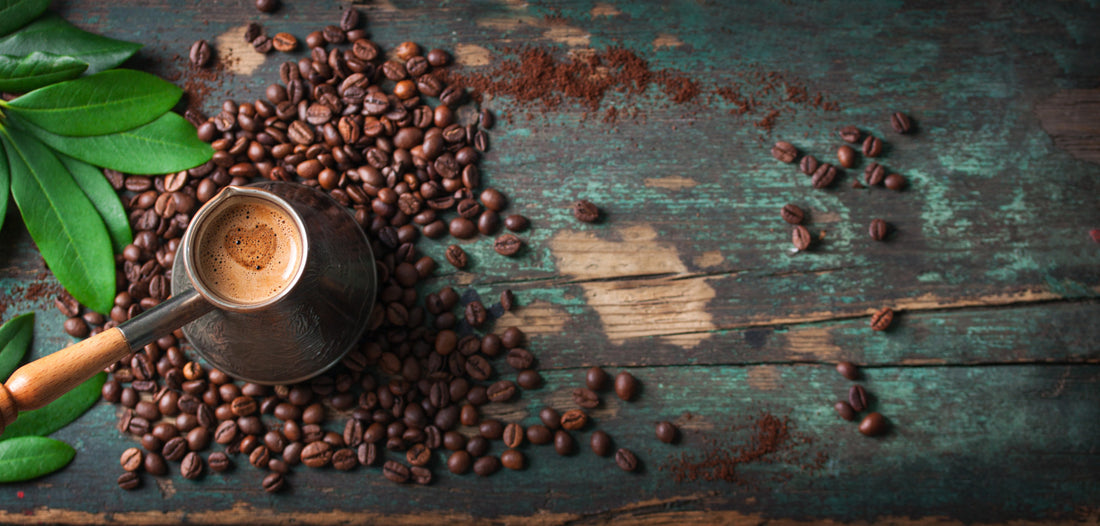Market forecasters predict humans will consume 164.8 million bags of coffee this year. Over seventy countries grow the coffee contributing to that total. Yet, when you make a cup of coffee, do you know where each coffee bean comes from? Coffee connoisseurs discover unique, international flavors when they choose single-origin coffee. Learn how coffee bean origin affects the taste of your brew.
What is Single-Origin Coffee?
When you open a bag of single-origin coffee, you know where every bean comes from. Single-origin coffee all comes from a single farm, producer, or known region in a country. Coffee roasters often name single-origin beans after their native region. Your favorite single-origin coffee might not be available every month. That's because roasters follow the harvest cycle in the beans' region. Farmers package these beans right after harvest season, which varies depending on the farm location.
Is a Single-Origin Coffee Different Than a Blend?
Yes. A coffee blend mixes coffee beans from different regions together. A blend might only use beans from one coffee plant species—say, Arabica—but bring together beans from Arabica farms across the globe. Or it might combine different species for an unexpected twist. Blending can temper some of the extreme regional flavors that certain beans can develop. In contrast, single-origin coffee draws those flavors out.
Single-origin coffee products all use beans from the same place. Usually, these beans are all the same species. Rarely, you'll find a single origin coffee that fuses multiple coffee species from the same region.
Is Single-Origin Coffee Better?
Everyone's preferences are different. Single-origin coffee brings out subtle flavors unique to the beans' region. The focus on the origin makes those notes sing. But blends offer balance and harmony. Fans of blends appreciate that balance. Strong, hyper-precise flavors can feel overwhelming. But, for single-origin fans, bold and distinct flavors are what coffee is all about.
How Does Growing Altitude Affect Taste?
Coffee plants have interesting roots. To grow well, they need soil that's porous and drains easily. Most coffee trees grow on slopes. When coffee trees grow at higher altitudes, they're colder. The cold slows down the trees' growth rate. The trees, in turn, devote more energy to reproduction. This leads trees to develop more sugars for their seeds—coffee beans! The tree's sugars nourish the beans. When you roast them, the sugars in the beans create unique scents and flavors.
High altitudes also improve rainwater drainage. Coffee plants at the base of a mountain experience heavier "watering" than higher altitude plants. With ample water, beans develop a smooth, mellow flavor. With less water, beans become more acidic. Sugars are acidic compounds. The higher the sugar concentration, the more acidic the bean is.
Do Different Growing Regions Produce Different Tasting Coffee Beans?
Yes. The coffee plant's regional environment affects the taste of its seed. Five regional, environmental factors impact a coffee bean's flavor. These are:
- Rainfall
- Humidity
- Temperature
- Soil
- Altitude
Each of these elements contributes to the coffee plant's climate.
Rainfall and Humidity
Coffee plants need a lot of water, both in rainfall and vapor form. That's why so many varietals thrive in the rainforest. One report shows that when a tree gets less than 63 inches of rain in the growing season, its beans are much smaller than average. Yet, when it gets too much rain, particularly during the harvest season, more beans develop defects. Water affects the bean's internal consistency. It also impacts the concentration of sugars and proteins that contribute to its acidity.
Temperature
Temperature limits where coffee is grown. Coffee trees thrive at temperatures that range from 60ºF-80ºF. When the temperature fluctuates between day and night, coffee beans develop more complex flavors. Botanists believe this balance lets beans ripen more slowly. That gives sustaining sugars more time to develop and pass on their complex flavors.
Soil
Soil affects the coffee's flavor in two ways. First, the plant uses the soil's nutrients to grow. The tree uses the soil's unique minerals to create its sugars, which it then feeds its seeds. Because each type of soil includes different minerals, different soils incite the tree to create slightly different sugars. The seeds—coffee beans—absorb different flavors depending on what sugar compound nourishes them. Second, soil impacts rainwater drainage. Porous soil drains more easily. As a result, porous soil impacts coffee plants in the same way a high altitude does.
Coffee connoisseurs praise volcanic soil's effect on coffee beans. Volcanic soil is porous, and it's composed of diverse minerals.
This explains why Hawaiian Kona coffee is so sought after. In Hawaii, the Kilauea volcano constantly replenishes the soil with new minerals. Coffee beans from that soil have some of the richest, most complex flavors in the world. The right soil cultivates truly quality coffee.
What is a Coffee Cherry?
To the untrained eye, the most obvious coffee produce on a tree is the coffee cherry. A coffee cherry is the fruit of a coffee plant. In the spring, the coffee trees blossom with beautiful white flowers. From these flowers, they bud a vibrant fruit. This red, yellow, or pink pit fruit is a coffee cherry. The coffee bean itself is a seed, buried in the center of the fruit. Coffee cherries are edible. They have a mild, sweet flavor. But coffee cherries are a hassle to eat, because there just isn't much pulp. The seed takes up most of the interior space. The coffee cherry itself might impact the bean's flavor. It's more likely that ripe, sweet cherries signal the strengths of the tree's sugars. That underlying trait impacts the flavor. However, you can impact a coffee bean's flavor when you process the cherry.
How Are Coffee Cherries Processed?
Within the coffee cherry, the beans are encased in a mucilage layer. They're also wrapped in a papery "parchment" layer. Processing is part of harvesting a coffee bean. You want to separate the bean from the cherry. But you don't want to lose the aromas in the mucilage layer. Farmers use three methods to process coffee cherries. There's the wet process, the dry process, and the hybrid process. Farmers use the dry process to create natural processed coffee. As with roast preferences or brew method dispositions, people are divided on the best way to process cherries. Each option has merits and drawbacks.
Wet, Dry, or Hybrid?
The wet process pulps the coffee cherry. Then, you set the beans and pulped mucilage in water. Leave it to ferment for two or three days. The wet process is also called "washed processing." It's the most common process, and it brings out the richest flavors. But it requires serious skill, so the result is more expensive coffee.
To use the dry process, you dry the coffee cherries in the sun for two to six weeks. Then, you remove the dried seeds. This drying process is an older method. It's mostly used in drier regions. The hybrid process is new. It uses machines to pull and dry the coffee beans. Some specialty coffee brands use the hybrid method to cultivate honeyed undertones.
What Are Coffee Varietals?
A coffee varietal is a type of coffee. Sometimes different varietals are different species that share the same genus (Coffea). In other cases, one species can encompass many varietals.
Arabica is a good example. Arabica is a distinct Coffea plant species. Yet, many Arabica breeds offer distinct flavor profiles. Marigojipe, Bourbon, and Brazilian Santos are all Arabica varietals.
Some varietals are hybrids. Farmers create hybrids by cross-pollinating different coffee tree species. One popular hybrid is Arabusta, a coffee plant with Arabica and Robusta heritage.
For the highest-grade coffee, try rare varietals. The Tabi cultivar in Columbia gives a delicious twist to Arabica.
What is a Coffee Flavor Profile?
A coffee flavor profile describes a coffee's unique flavors and aromas. Sensory experts differentiate between coffees using taste and aroma descriptors. Food critics use descriptive wheels to identify discrete parts of a sensory experience. In 1995, coffee researchers standardized these descriptions and published the Coffee Taster's Flavor Wheel. In 2016, the World Coffee Research group updated the wheel to include new distinctions.
How Does Roasting Coffee Affect Taste?
After the coffee's processed, it's time to roast. The coffee's roast affects its intensity and bitterness. It also impacts the drink's caffeine content. The longer you roast a bean, the more intense the flavor gets. And longer roasts bring out bitter elements. Dark roasts are the longest.
In contrast, shorter roasts leave the bean with a more mellow flavor. They also let the bean retain more caffeine. Blonde roasts are the shortest. Note: lighter roasts elevate citrus, fruit, and acidic flavors. For some, this means lightly roasted coffee tastes sour. Dark roasts caramelize longer, which brings out full-bodied, nutty, or chocolate flavor profiles.
Does Coffee Bean Flavor Vary From Country to Country?
Yes. A country's climate and environment affect the beans' flavor. Tropical countries in South America get different results from coffee trees than dry, African countries do. Taste the wild jungles of Kenya. Sip the warm Costa Rican coastline. At Fresh Cup, you can explore our truly global selection of single-origin coffees. Choose a coffee bean made just the way you like. Take your tastebuds on an adventure today. At Fresh Cup, we bring global coffee sensations to the comfort of your home.

